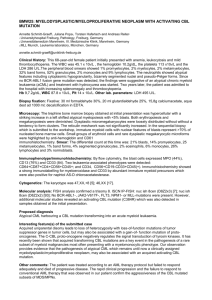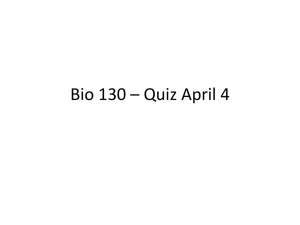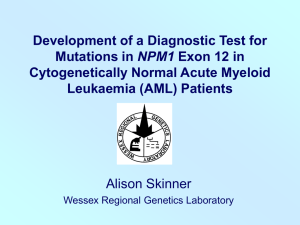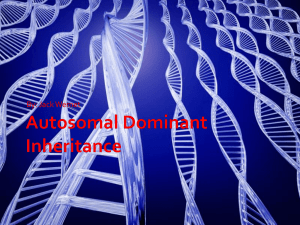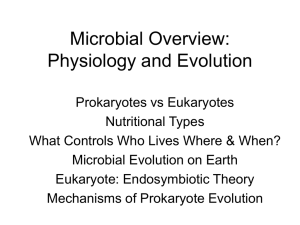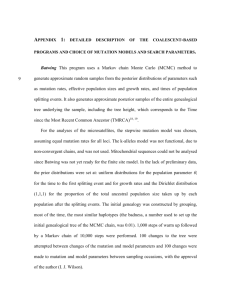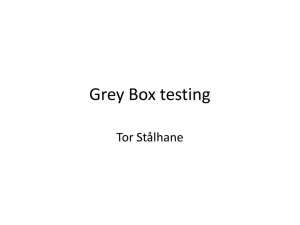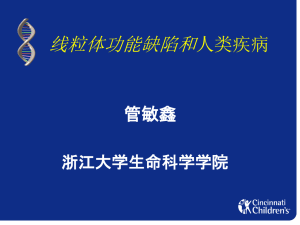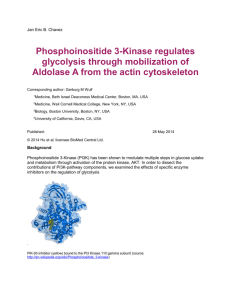Midterm 1 Answers 1. Mutation at S9 to alanine would cause GSK3
advertisement
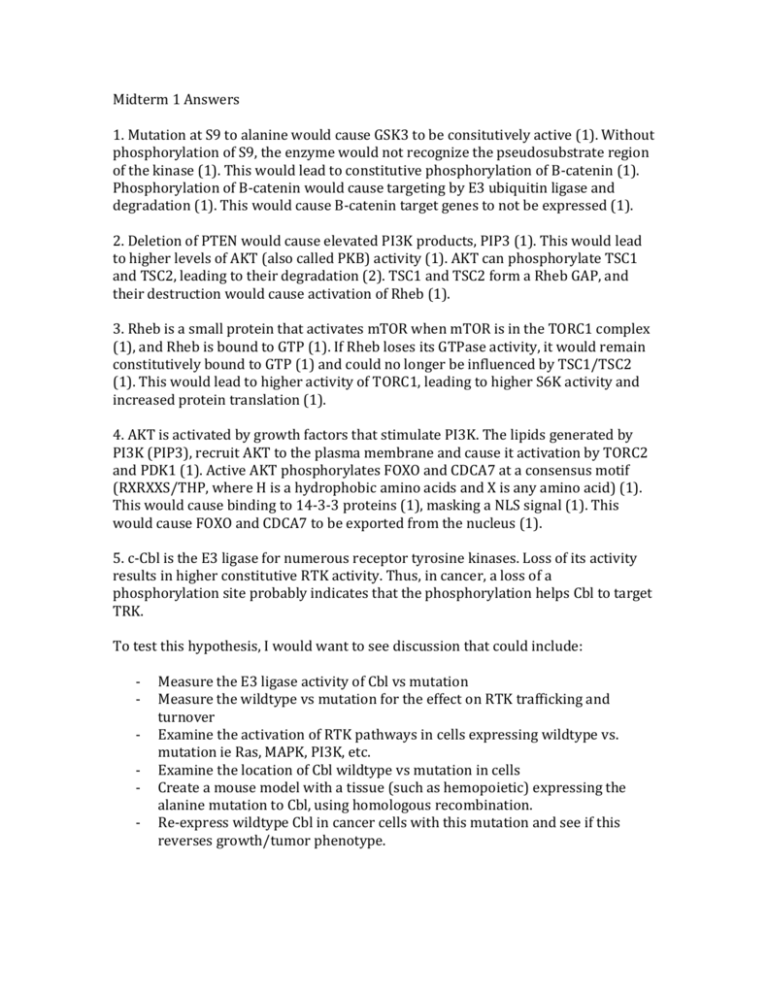
Midterm 1 Answers 1. Mutation at S9 to alanine would cause GSK3 to be consitutively active (1). Without phosphorylation of S9, the enzyme would not recognize the pseudosubstrate region of the kinase (1). This would lead to constitutive phosphorylation of B-catenin (1). Phosphorylation of B-catenin would cause targeting by E3 ubiquitin ligase and degradation (1). This would cause B-catenin target genes to not be expressed (1). 2. Deletion of PTEN would cause elevated PI3K products, PIP3 (1). This would lead to higher levels of AKT (also called PKB) activity (1). AKT can phosphorylate TSC1 and TSC2, leading to their degradation (2). TSC1 and TSC2 form a Rheb GAP, and their destruction would cause activation of Rheb (1). 3. Rheb is a small protein that activates mTOR when mTOR is in the TORC1 complex (1), and Rheb is bound to GTP (1). If Rheb loses its GTPase activity, it would remain constitutively bound to GTP (1) and could no longer be influenced by TSC1/TSC2 (1). This would lead to higher activity of TORC1, leading to higher S6K activity and increased protein translation (1). 4. AKT is activated by growth factors that stimulate PI3K. The lipids generated by PI3K (PIP3), recruit AKT to the plasma membrane and cause it activation by TORC2 and PDK1 (1). Active AKT phosphorylates FOXO and CDCA7 at a consensus motif (RXRXXS/THP, where H is a hydrophobic amino acids and X is any amino acid) (1). This would cause binding to 14-3-3 proteins (1), masking a NLS signal (1). This would cause FOXO and CDCA7 to be exported from the nucleus (1). 5. c-Cbl is the E3 ligase for numerous receptor tyrosine kinases. Loss of its activity results in higher constitutive RTK activity. Thus, in cancer, a loss of a phosphorylation site probably indicates that the phosphorylation helps Cbl to target TRK. To test this hypothesis, I would want to see discussion that could include: - Measure the E3 ligase activity of Cbl vs mutation Measure the wildtype vs mutation for the effect on RTK trafficking and turnover Examine the activation of RTK pathways in cells expressing wildtype vs. mutation ie Ras, MAPK, PI3K, etc. Examine the location of Cbl wildtype vs mutation in cells Create a mouse model with a tissue (such as hemopoietic) expressing the alanine mutation to Cbl, using homologous recombination. Re-express wildtype Cbl in cancer cells with this mutation and see if this reverses growth/tumor phenotype. 6. Read through the paper by Schwitalla-et-al-Cell-2013. The important points that I want to see are that a tumor environment can lead to inflammation. This inflammation will result in activation of NF-kB by TNFa. In the context of Wnt signalling, constitutive stabilization of B-catenin by an acquired mutation will promote the formation of TCF/LEF transcription complex and drive the expression of genes that promote growth and division. NF-kB can cooperate with TCF/LEF through the histone acetyltransferase CBP, resulting in additional gene activation, including genes that promote de-differentiation epithelial cells to stem cells that have greater tumor-forming properties. 7. Examine the paper by Inuzuka et al (Jan 14). The experiments that I want to see include: - MCL1 contains a target GSK3 site(s) that overlap with the Fbw7 consensus. MCL1 is phosphorylated on these sites in a GSK3-dependent manner MCL1 binds to Fbw7 at these sites; mutation to alanine disrupts binding Knockdown of Fbw7 by shRNA or deletion by homologous recombination stabilizes MCL1 Mutation of these sites to alanine stabilizes MCL1 Inhibition of GSK3 stabilizes MCL1 The alanine mutations result in protection from apoptosis Knockdown of MCL1 by shRNA increases sensitivity to chemotherapeutic drugs
